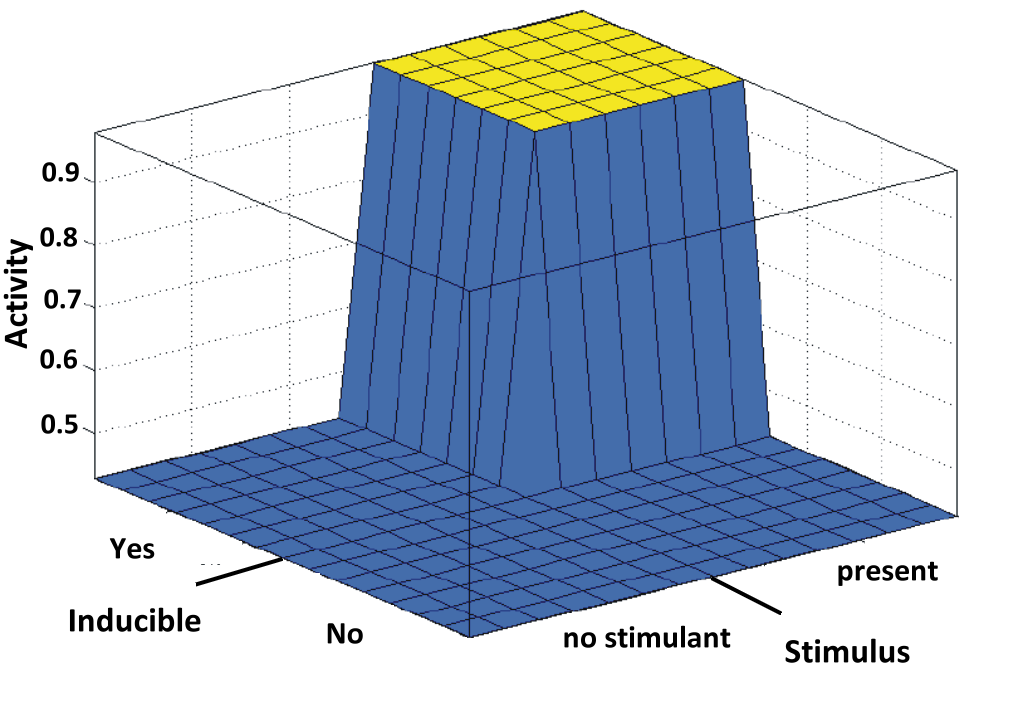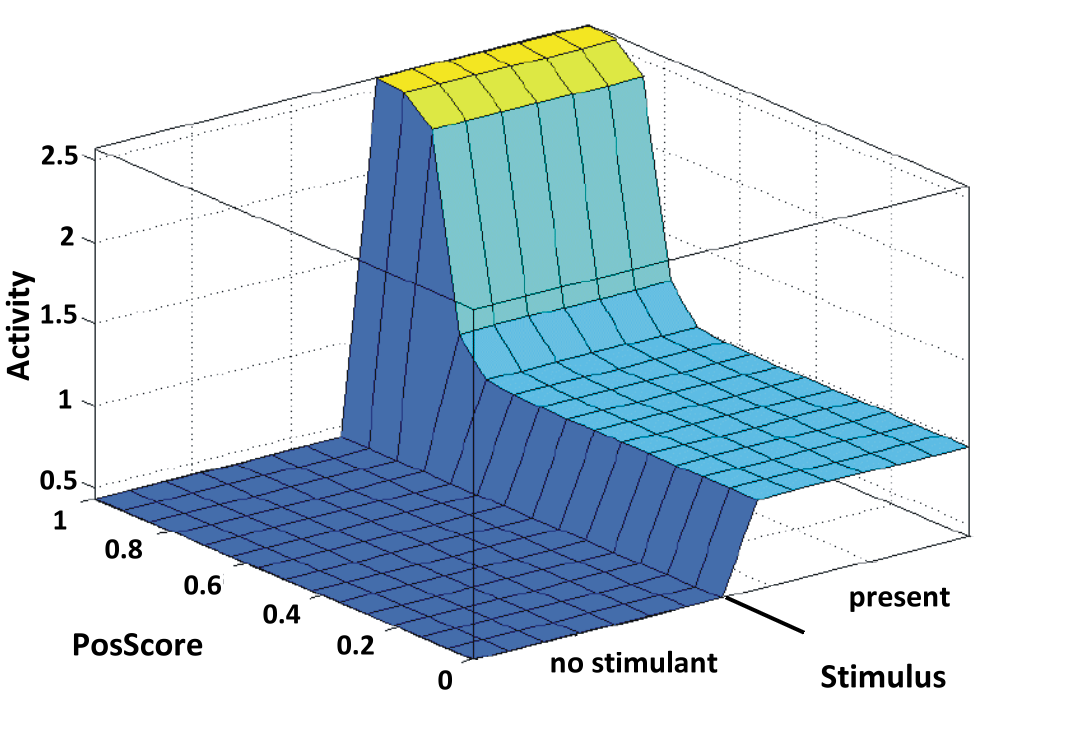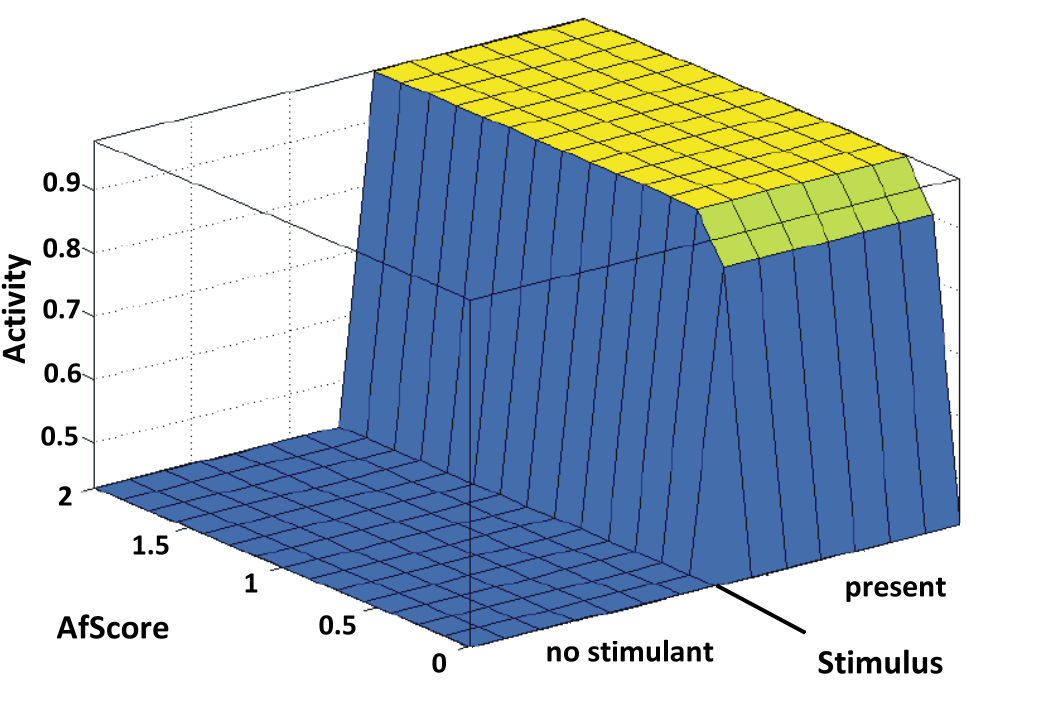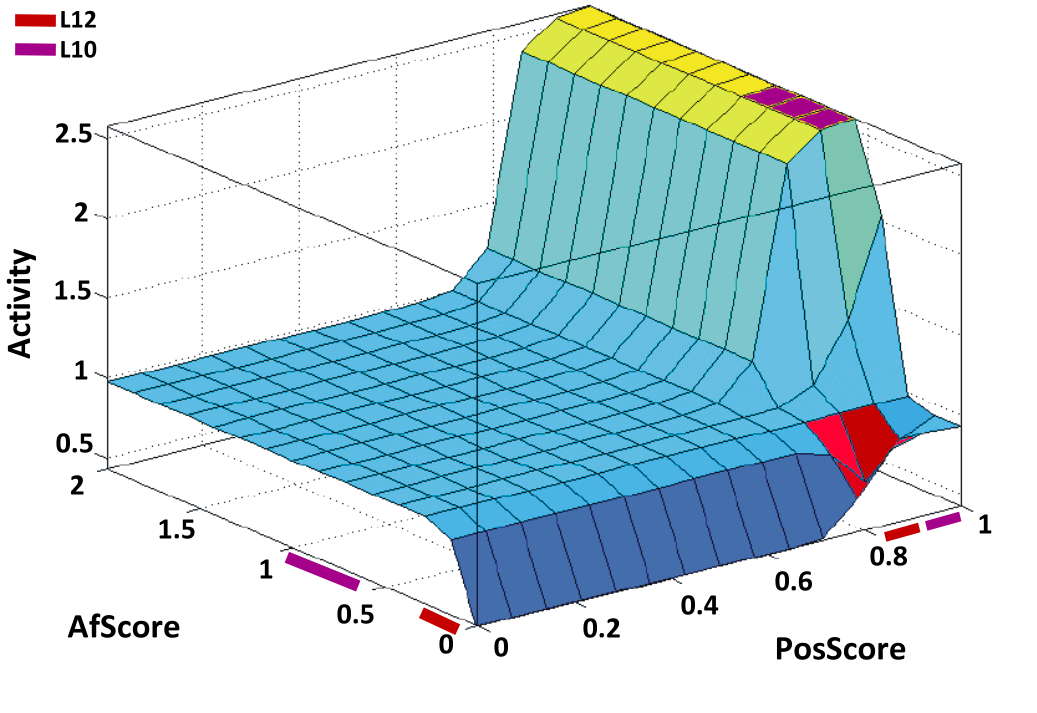Team:Heidelberg/HEARTBEAT network/Results
From 2009.igem.org
Naoiwamoto (Talk | contribs) (→HEARTBEAT Fuzzy Modeling) |
Naoiwamoto (Talk | contribs) |
||
| Line 4: | Line 4: | ||
{| | {| | ||
|-valign="top" border="0" style="margin-left: 2px;" | |-valign="top" border="0" style="margin-left: 2px;" | ||
| - | |width=" | + | |width="650px" style="padding: 0 15px 15px 20px; background-color:#ede8e2"| |
__NOTOC__ | __NOTOC__ | ||
= HEARTBEAT Fuzzy Modeling = | = HEARTBEAT Fuzzy Modeling = | ||
Revision as of 21:46, 19 October 2009
HEARTBEAT Fuzzy ModelingResultsModeling inducible promotersBased on prior data analysis of data derived from flow cytometry experiments using inducible synthetic NFkB responsive promoters we developed a fuzzy controller which reflects the behavior of inducible promoters. By using our model we were able to capture the basic behaviour of an inducible promoter (Fig.1).
what is the model good for: importantly, our model captures the behaviour of an inducible promoter. we next wondered wheter we would be able to establish the same for an non-inducible promoter
from here: constitutives
point out: different promoter design, different experimental measuerment, as well as literature data -> final model? and then jump to final model.
|
 "
"



